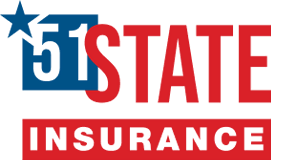Navigating the Auto Insurance Claim Process in the USA: Your Guide to Filing, Managing, and Resolving Your Post-Accident Claim

Transforming Chaos into Control After a Car Accident
A car accident is an inherently stressful event. Beyond the immediate shock of the collision, the ensuing auto insurance claim process can often feel like a daunting labyrinth of paperwork, phone calls, and complex terminology. Yet, mastering this process is paramount for your financial recovery, vehicle repair, and physical well-being. Whether you’ve been in a minor fender-bender or a more significant motor vehicle collision, understanding what happens after a car accident insurance claim is filed is your essential roadmap to transforming chaos into control.
This comprehensive guide is designed to empower you through every step of filing an auto insurance claim in the USA. We’ll demystify the roles of claims adjusters, illuminate the intricacies of car accident settlement negotiations, and arm you with insurance claim tips to protect your rights and ensure a fair resolution to your post-accident claim.
Section 1: The Immediate Aftermath & Initial Reporting (Recap & Hand-off)
Even before you begin the formal auto claim process, the groundwork laid at the accident scene is crucial. This section briefly recaps initial steps and sets the stage for your claim.
1.1 Timely Notification: Why Every Hour Counts As detailed in our previous guide, “What to Do After a Car Accident in the USA: A 2025 Survival Guide, the first step is always to report the accident to your insurer immediately. Most policies contain clauses requiring prompt notification, often within 24–72 hours. Delaying this report can jeopardize your coverage or complicate the investigation, as evidence can degrade and memories fade.
1.2 Understanding Your Claim Type: First-Party vs. Third-Party Navigating the insurance claim after accident begins with identifying how you’ll pursue compensation:
- First-Party Claim: This is a claim you file directly with your own insurance company. It typically involves coverages like Collision Coverage, Comprehensive Insurance, Personal Injury Protection (PIP), MedPay (Medical Payments coverage), or Uninsured/Underinsured Motorist (UM/UIM) coverage. You’ll use this if you’re at fault, the other driver is uninsured, or for specific benefits your policy provides regardless of fault.
- Third-Party Claim: This is a claim you file against the at-fault driver’s insurance company, utilizing their Liability Coverage (Bodily Injury Liability and Property Damage Liability). This is the route if another driver is determined to be responsible for the accident.
Section 2: Filing the Claim & Essential Documentation
Once you’ve made initial contact, the formal auto insurance claim process requires specific actions and meticulous record-keeping.
2.1 Official Notification to Your Insurer: What to Tell Them When you contact your insurer, be prepared to provide factual details: the date, time, and exact location of the accident, the names and contact information of all parties involved, and the police report number. Crucially, stick to facts only. Do not speculate about fault, minimize your injuries, or admit responsibility. Anything you say can potentially be used later. Many insurers offer easy online portals or mobile apps for initial claim submission.
2.2 Power of Documentation: Building Your Case Robust documentation is the backbone of any successful car accident claim.
- Police Report: Obtain a copy of the official accident report. It provides an objective summary of the incident, including diagrams, officer’s notes, and witness information.
- Photos & Videos: The visual evidence you captured at the scene (damage, vehicle positions, road conditions, skid marks) is invaluable. Organize these clearly.
- Medical Records: This is paramount for any personal injury claim process. Begin a file for all medical bills after car accident, receipts for prescriptions, therapy sessions, and results from all diagnostic tests. Consistent medical care creates a clear record of your injuries and treatment.
- Personal Notes: Maintain a detailed log of all interactions – dates, times, names of people you spoke with (adjusters, doctors, lawyers), and summaries of conversations. These accident documentation tips are critical for accuracy.

2.3 The Claims Adjuster: Your Primary Contact The claims adjuster is the insurance company’s representative assigned to investigate your claim. Their role is to gather facts, assess damages, determine liability, and ultimately negotiate a car accident settlement. Be cooperative but cautious. While they are friendly, remember their primary goal is to resolve the claim efficiently for their company. You might interact with a “staff adjuster” (employed directly by the insurer) or an “independent adjuster” (contracted by the insurer). For example, if asked, “How are you feeling?”, it’s safer to say, “I’m following up with my doctor as advised,” rather than giving a detailed account that could be misinterpreted. Avoid giving recorded statements without legal counsel if you have significant injuries or complex circumstances.
Section 3: Assessing Damages: Vehicle & Property
One of the first tangible steps in the auto insurance claim process is assessing the physical damage.
3.1 Vehicle Damage Assessment: Repairs vs. Total Loss Your adjuster will guide you through getting your vehicle inspected. This might involve taking it to a preferred repair shop in their network or allowing you to choose your own. Obtain detailed car repair claim estimates. If the cost of repairs exceeds a certain percentage (set by state law or insurer policy of your vehicle’s actual cash value (ACV), your car may be declared a “total loss.” In a totaled car insurance payout, the insurer pays you the ACV of the vehicle, less your deductible. ACV is typically determined by looking at comparable sales of vehicles of the same make, model, year, and condition in your area, often utilizing industry guides like Kelley Blue Book or NADAguides. It’s wise to get multiple repair estimates for comparison if you’re choosing your own shop.

3.2 Property Damage Beyond Vehicles If the accident involved damage to property other than vehicles (e.g., fences, mailboxes, landscaping, storefronts), ensure these are documented with photos and included in your property damage claim.
Section 4: Addressing Injuries & Medical Bills (Personal Injury Claim)
If you or your passengers sustained injuries, the personal injury claim process becomes a central part of your claim.
4.1 The Crucial Role of Medical Documentation As reiterated, prompt and consistent medical care is non-negotiable. Medical records for claim purposes must clearly link your injuries to the accident. Any gap in treatment can be used by insurers to argue your injuries were not accident-related.
4.2 Understanding Medical Payments & Coverage
- PIP (Personal Injury Protection) / MedPay (Medical Payments coverage): These are “no-fault” coverages that pay for your medical expenses (and sometimes lost wages) regardless of who caused the accident. PIP is mandatory in “no-fault” states like Florida MedPay is optional in many “at-fault” states. Often, your PIP or MedPay will be the primary payer up to its limits, followed by your health insurance.
- Health Insurance: Your health insurance may cover medical bills, but they might place a medical lien on any future settlement to recoup their costs. Be aware that health insurance companies may seek “subrogation” or place a “medical lien” on any settlement you receive from the at-fault party to recover their costs.
- Liability Coverage: In “at-fault” states, the at-fault driver’s Bodily Injury Liability coverage is intended to pay for your medical treatment and other damages.
4.3 Calculating Economic Damages: These are quantifiable financial losses. They include medical bills after car accident (past and projected future costs), lost wages claim (income lost due to inability to work), and any other out-of-pocket expenses directly related to your injuries (e.g., transportation to appointments, assistive devices). For example, if you earn $25/hour and missed 80 hours of work due to your injury, your lost wages would be $2,000. Combine this with $3,500 in physical therapy bills and $200 in prescription costs, and your current economic damages total $5,700.
4.4 Non-Economic Damages: Pain and Suffering Beyond financial losses, a personal injury claim can also seek compensation for non-economic damages, commonly known as pain and suffering claim. This includes physical discomfort, emotional distress, mental anguish, loss of enjoyment of life, and loss of consortium. These are subjective and more challenging to quantify, often calculated using methods like the multiplier method (e.g., multiplying your total economic damages by a factor, typically 1.5 to 5, depending on injury severity) or per diem methods (assigning a daily amount for pain).
Section 5: The Negotiation Process: Reaching a Settlement
Once damages are assessed and medical treatment is stabilized, the negotiation phase of your car accident settlement begins.
5.1 Valuing Your Claim: What Determines Its Worth The value of your claim is influenced by several factors: the severity of your injuries, the clarity of fault, the extent of your medical bills and lost wages, and the impact on your quality of life. Be patient; rushing often leads to lower offers.
5.2 Initial Offers: Why They Might Be Low It’s common for insurance companies to make a low initial offer. This is often a test to see if you understand the full value of your claim and are prepared to negotiate. Don’t be discouraged or feel pressured to accept it immediately.
5.3 Strategies for Negotiation Present your documented damages clearly and concisely. Justify your counter-offers with solid evidence, including medical records, wage statements, and detailed personal accounts of your pain and limitations. For instance, clearly show how missing work impacted your family’s finances or how your injury prevents you from enjoying a beloved hobby. Be prepared to back up your figures.
5.4 Understanding Release Forms & Finalizing Settlement Once an agreement is reached, you will be asked to sign a release form car accident. This is a legally binding document stating that you waive your right to further claims related to that specific accident in exchange for the settlement amount. Do not sign this document until you are absolutely certain all your current and future damages are accounted for, especially if injuries are still being treated.
Section 6: Common Pitfalls & How to Avoid Them
Navigating the post-accident claim process requires vigilance. Avoid these common mistakes that can jeopardize your claim:
6.1 Delaying Reporting or Medical Care: As previously emphasized, promptness is key for both. Delays can lead insurers to question the legitimacy or severity of your injuries. Be aware of your state’s statute of limitations for car accident claims, which sets a strict deadline. While specifics vary by state, the statute of limitations typically ranges from one to three years for personal injury, but can be longer for property damage. Missing this deadline means losing your right to file a lawsuit.
6.2 Admitting Fault or Giving Recorded Statements: Reiterate: never admit fault. Politely decline to give a recorded statement to the other party’s insurer without consulting your own insurer or legal counsel.
6.3 Accepting a Quick, Low Settlement: Insurers often push for fast, cheap settlements, especially early on. Do not accept an offer until you fully understand the extent of your injuries and all associated costs (past and future).
6.4 Lack of Meticulous Documentation: From the scene photos to ongoing medical records for claim, thorough documentation is your best friend.
6.5 Not Understanding Your Policy: Familiarize yourself with your own car insurance deductible and insurance policy limits so you know what to expect.
Section 7: When to Consider Legal Counsel

While minor claims can often be handled independently, complex situations often benefit from professional legal expertise.
7.1 Complex Cases: When Professional Help is Essential It is highly advisable to consult a personal injury attorney if:
- You sustained any injuries (e.g., long-term pain, permanent disability, requiring surgery).
- Fault for the accident is disputed.
- The insurance company denies your claim, significantly delays the process, or offers an unreasonably low settlement.
- The at-fault driver is an uninsured motorist or underinsured motorist, and your UM/UIM coverage is inadequate or disputed.
- There are multiple parties or vehicles involved, complicating fault determination.
- The accident involved a commercial vehicle (truck, bus, taxi), as these claims often have different regulations and higher stakes.
- You are unsure about your legal rights or the value of your claim.
7.2 What a Personal Injury Attorney Does for You A car accident lawyer USA can investigate the accident, gather crucial evidence, communicate and negotiate with insurance companies on your behalf, assess the full value of your damages, and represent you in court if a fair settlement cannot be reached. They protect your interests against insurance company tactics.
7.3 Understanding Contingency Fees: Many personal injury attorney firms work on a contingency fee lawyer basis, meaning they only get paid if you win your case, and their fee is a percentage of the final settlement or award. This makes legal representation accessible even if you have limited funds.
Conclusion: Transforming Crisis into Recovery
Navigating the auto insurance claim process after a car accident in the USA can be challenging, but it is far from insurmountable. By understanding the steps involved, meticulously documenting every detail, cautiously communicating with adjusters, and knowing when to seek expert legal guidance, you can transform a moment of crisis into a manageable journey towards recovery and fair compensation. Empower yourself with this knowledge, stay vigilant, and protect your rights as you move forward after an accident.
